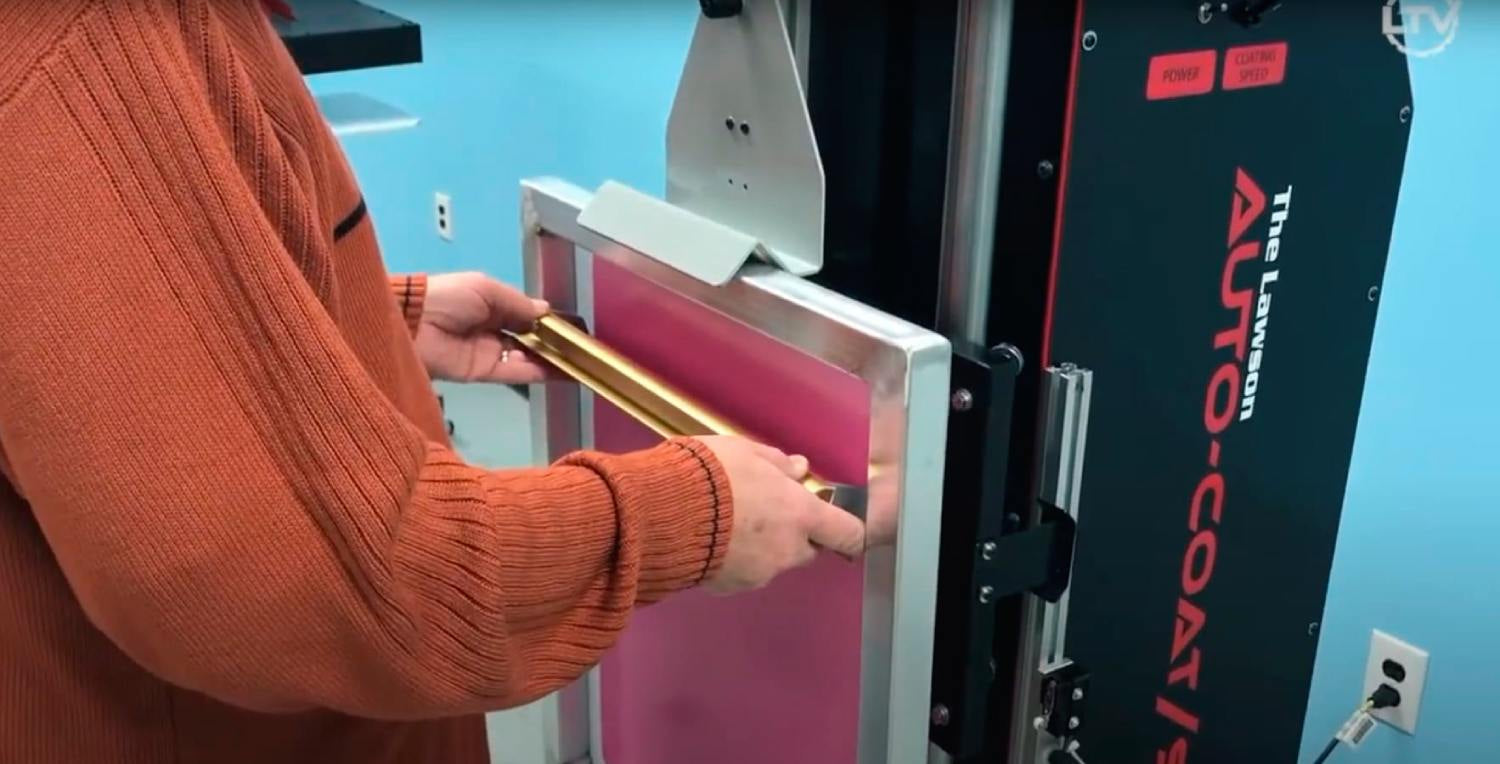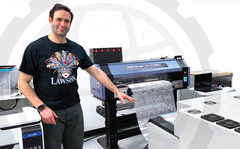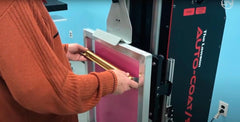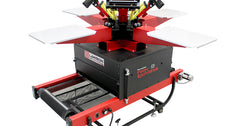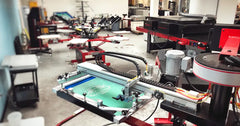Traditionally a labor-intensive and time-consuming process, screen printing requires experienced and skilled knowledge throughout the process. However, as the industry confronts increasing labor challenges and a lack of experienced printers, screen printing owners and production managers are increasingly looking for ways to streamline the printing process through equipment automation. From screen creation and pre-press, printing and post-production, automation options are now available at every stage of the process. By replacing jobs traditionally done by people with automatic equipment, shop owners can experience benefits such as increased production rates, reduced long-term overhead costs, and greater profitability.
Automating Screen Creation and Pre-Press
Equipment automation starts in the pre-press area even before a single tshirt is printed. Focusing on automation in the first step of the screen printing process helps get the order quickly and efficiently through the initial process so printing can begin.
Emulsion Coating
The first step of any screen printer remains emulsion coating. Manually, the task requires using a scoop coater to coat the screen by hand but can now be performed through a variety of semi-automatic and fully automatic methods. Benefits of automation include consistent coating thickness (known technically as emulsion over mesh, or EOM). Among other things, a consistently coated screen ensured better exposure and less pinholes during printing. Plus, the use of an automatic screen coater virtually eliminates the extensive training and “art” to manually applying liquid emulsion. For a shop hiring someone in their pre-press room, teaching them how to load a blank frame in a machine is a lot easier than teaching them manual coating techniques.
CTS Imaging
Reasonable people can argue if computer-to-screen (CTS) technology is or is not automation. Setting aside the debate of whether CTS automates a film positive, some undisputed recent CTS advances do create even more automation. There are now multiple inkjet CTS and laser-to-screen (LTS) machines that automatically expose a screen after imaging it. Those automation eliminates the need to move the screen from imaging to a separate exposure unit. Thus, reducing the number of “touches'', or times a person handles a screen. Examining this metric shows that everytime a screen is handled increases labor cost and can potentially slow down the printing process. High-volume and performance based shops are particularly focused on this as a means to speed up production.
Screen Development
Maybe one of the last remaining places where automation has not been widely adopted, screen development, or washing out a screen can be done through specialized screen printing equipment. People traditionally think of this as an “easy” job - simply wash a screen with water until the unexposed emulsion comes out, leaving your image in place. However, too much pressure or holding your sprayer too close to the screen can blow out fine lines, fonts or half tones, leaving you with a ruined screen. Automation enables consistency through even application and water pressure during the entire process helping ensure a properly developed screen without losing detail.
Automation in Printing
An automatic screen printing machine is perhaps the most important equipment automation choice. It can dramatically increase your productivity and capacity to print more, leading to increased revenue and profits.
Printing with an automatic helps eliminate reliance on experienced screen printing operators.Manual printing requires not only an understanding of squeegee pressure and print angle but the ability to execute it consistently over hundreds of shirts, week-in and week-out. Achieving this level of consistency can be difficult, even for experienced printers. An automatic press makes it easier to compensate for these variables, resulting in more consistent prints. It also does not get tired, which means you can print for longer periods of time without operator fatigue.
Overall, an automatic screen printing machine is a wise investment for any business that wants to increase its productivity and profitability. It can save you time and money, and it can help you produce high-quality prints consistently.
Reclaim and Post-Production Automation
The final equipment automation option is available for reclaim in post-production. One of the worst tasks in any screen print shop is cleaning (reclaiming) screens because of the mess and chemical exposure. This makes it the most requested automation in screen print shops.The Ajax-R & Wash-n-Go significantly reduces chemical costs and creates a safer and cleaner working environment.
Automatic reclaiming also solves labor issues. Often the lowest paid position, hiring (and retaining) someone willing to reclaim screens all day is difficult. An automation solution creates reclaiming uniformity no matter the position and dramatically reduces the learning curve. Instead of a long and intensive onboarding process of teaching how to clean a screen, the learning cure is flattened to be as simple as putting a screen into a machine.
In conclusion, today's screen printing industry has seen an increase in automation options at a variety of price points, with consistency being a central theme throughout the various equipment options. By adopting these screen printing equipment automations provide for a more streamlined workflow, with the end result being increased productivity and reduced costs, leading to greater profitability.

